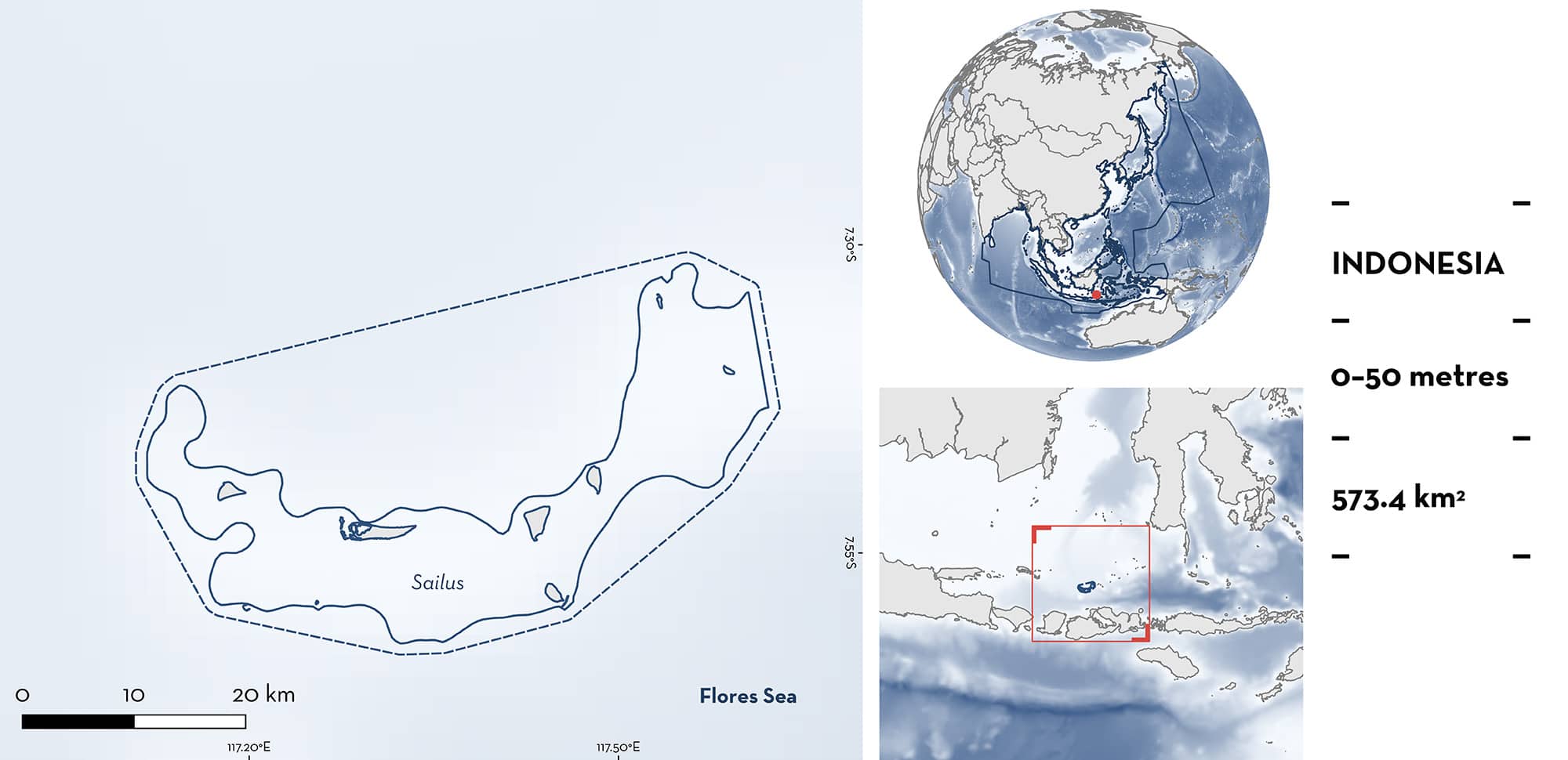ISRA FACTSHEETS
ISRA FACTSHEETS
ASIA REGION
Sailus
Summary
Sailus is located in the West Liukang Tangaya archipelago in the Flores Sea of southern Indonesia. The area includes ten islands on a wide shelf. It is characterised by the presence of coral reefs and sandy substrates. Within this area there are: threatened species and reproductive areas (Silky Shark Carcharhinus falciformis).
Download factsheet
Sailus
DESCRIPTION OF HABITAT
Sailus is located in the West Liukang Tangaya archipelago in the Southern Sulawesi province and sits within the Flores Sea. The area includes ten islands and is located on the continental shelf. It is characterised by the presence of coral reefs and sandy substrates.
The area is influenced by monsoon seasons. The northwest monsoon (December to February) brings low-speed winds and high rainfall while the southeast monsoon (June to August) brings high-speed winds and lower precipitation and seasonal upwelling that increases the productivity of the area (Utama et al. 2017; Herdiana et al. 2024).
This Important Shark and Ray Area is benthic and pelagic and is delineated from inshore and surface waters (0 m) to 50 m based on the bathymetry of the area.
CRITERION A
VULNERABILITY
One Qualifying Species that regularly occurs in the area is considered threatened with extinction according to the IUCN Red List of Threatened Species. This is the Vulnerable Silky Shark (Rigby et al. 2021).
CRITERION C
SUB-CRITERION C1 – REPRODUCTIVE AREAS
Sailus is an important reproductive area for one shark species.
Between 2018–2020, 100 Silky Sharks (identified as neonates or young-of-the-year [YOY]) were observed caught in the area by fisheries using gillnets (BM Simeon unpubl. data 2024). Individuals measured 58–72 cm total length (TL) and were caught between August and October. The known size-at-birth for the species is ~56–87 cm TL (Ebert et al. 2021) confirming that these individuals were neonates or YOY. These life-stages were recorded at every landing site survey undertaken in the area during that period. Further, 144 mature females (186–239 cm TL) with well-developed oocytes were recorded in the area between 2019–2023 from longliners operating in the area, mostly between April and June (BM Simeon unpubl. data 2024). Between 2021–2022, 44 post-partum females (224–278 cm TL) and a few pregnant females (220–236 cm TL) with terminal embryos were also caught in the area by longliners between April and June confirming that it serves as a pupping area for the species. Sailus is the only area to the south of Sulawesi Island in the Flores Sea where these life stages have been recorded regularly.
Download factsheet
SUBMIT A REQUEST
ISRA SPATIAL LAYER REQUEST
To make a request to download the ISRA Layer in either a GIS compatible Shapefile (.shp) or Google Earth compatible Keyhole Markup Language Zipped file (.kmz) please complete the following form. We will review your request and send the download details to you. We will endeavor to send you the requested files as soon as we can. However, please note that this is not an automated process, and before requests are responded to, they undergo internal review and authorization. As such, requests normally take 5–10 working days to process.
Should you have questions about the data or process, please do not hesitate to contact us.


